Related Research Articles
The Boulton & Paul P.7 Bourges was a prototype British twin-engined biplane day bomber built by Boulton & Paul to replace the Airco DH.10. Despite demonstrating excellent performance and manoeuvrability, only three prototypes were built, post World War I cost cutting leading to the DH.10 not being replaced.

The Vickers Type 253 was a single-engined two-seat biplane general-purpose military machine built to a 1930 government specification. It won a production contract, but this was transferred to the same company's monoplane equivalent, the Wellesley. Only one Type 253 was built.
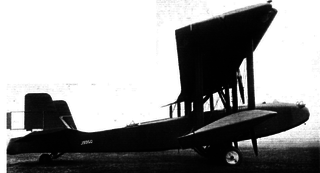
The sole Boulton & Paul P.32 was a British three-engined biplane built to an Air Ministry specification for a long range night bomber. A lack of engine availability slowed construction and by the time it went for tests the thinking on bomber types had moved on.
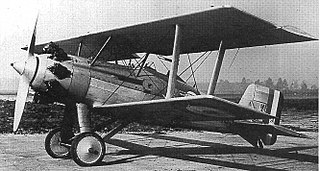
The Boulton & Paul P.33 Partridge was a single seat single-engined biplane fighter designed to an Air Ministry specification. One prototype was ordered and built for trials in 1928, but it was not put into production.
The Boulton & Paul P.12 Bodmin was an experimental British twin-engined biplane bomber with its engines mounted in a fuselage engine room and with tandem pairs of tractor and pusher airscrews mounted between the wings. The two Bodmins built flew in 1924, proving the concept but the layout was not developed to production.

The Boulton & Paul P.15 Bolton was a one-off experimental twin-engined reconnaissance biplane ordered by the Air Ministry to sustain Boulton & Paul's development of steel framed aircraft early in the 1920s. It was the RAF's first metal-framed aircraft.

The Boulton & Paul P.8 Atlantic was Boulton & Paul's attempt to adapt their well-performing Bourges bomber into an airliner. They hoped to gain publicity for it by winning the outstanding prize for the first non-stop Atlantic crossing but a first flight accident made them miss their opportunity. Two were built but none sold as airliners.

The Boulton & Paul P.10 was a two-seat, single-engined biplane built just after World War I to develop techniques for the construction of all steel aircraft. It is also notable for its first use of plastic as a structural material. Only one P.10 was built and it attracted much attention; but it probably never flew.
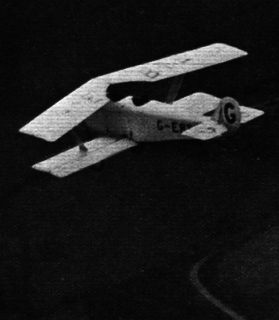
The Parnall Imp was an unusual single-engined, two-seat British biplane built in 1927. It had a straight cantilever lower wing which supported the markedly swept upper wing. Only one was built.

The Cranwell CLA.2 was a single-engined two-seat biplane built by staff and students of RAF College Cranwell as an entrant to the Lympne Two Seater Light Aeroplane Trials of 1924. It won the reliability prize.
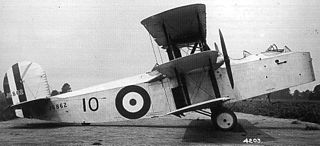
The Parnall Possum was an experimental triplane, with a single, central engine driving wing-mounted propellers via shafts and gears. Two of these British aircraft were built in the mid-1920s.
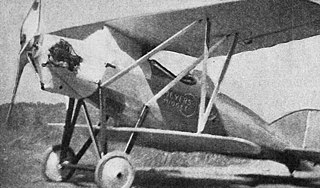
The Meyers Midget was a one-off small, low-powered, sporting single-seat sesquiplane, designed and built in the United States in 1926, incorporating several innovative structural features.
The Starck AS-27 Starcky was a racing single seat biplane of unusual wing layout with full stagger and a small gap. It was designed and built in France in the 1970s; only one was made.
The Spijker V.3, sometimes anglicized to Spyker V.3 or Spyker-Trompenburg V.3, was a Dutch single-engine, single-seat biplane fighter, designed and built just before the end of World War I.
The Letov Š-13 was a single-seat, single-engine fighter aircraft designed and built in Czechoslovakia in the early 1920s. A biplane, it had aerodynamically thick wings which were originally cantilever structures, though interplane struts were later added. Only one was produced.

The Albatros L.71 was a two-seat, single pusher engined biplane built in Germany in the 1920s.

The Potez VIII was a French training aircraft which first flew in 1920. Originally it had a very unusual vertical inline engine and a four-wheeled undercarriage, though the production version was more conventional.

The Aerial Engineering Corporation Standard 6W-3 was a commercial transport modification of the US Standard J-1 biplane military trainer aircraft, with new wings, engine and accommodation for four passengers. First flown in 1925, it was built in small numbers.

The Skraba S.T.3 was a two-seat Polish biplane built in 1928. It was the first all-metal aircraft designed in Poland; only one was completed.

The Dąbrowski D.1 Cykacz (Ticktock) was an unusual, small, low-powered, single-seat biplane, intended to provide wider access to flying. Though it was exceptionally aerodynamically clean, it was under-powered and had limited range. Only one was built.
References
Notes
- 1 2 3 4 5 6 7 8 9 Brew 1993 , pp. 145–7
- ↑ Brew 1993 , pp. 358
- ↑ CAA registration document for G-EACJ Archived 6 June 2011 at the Wayback Machine
- ↑ "Boulton Paul Association". Archived from the original on 15 April 2008. Retrieved 23 September 2009.
- ↑ Brew 1993, p. 147
- ↑ Brew 1993, p. 145
- ↑ Bruce 1957, p. 103
Bibliography
- Brew, Alec (1993). Boulton Paul Aircraft since 1915. London: Putnam. ISBN 0-85177-860-7.
- Bruce, J.M. (1957). British Aeroplanes 1914–18. London: Putnam.